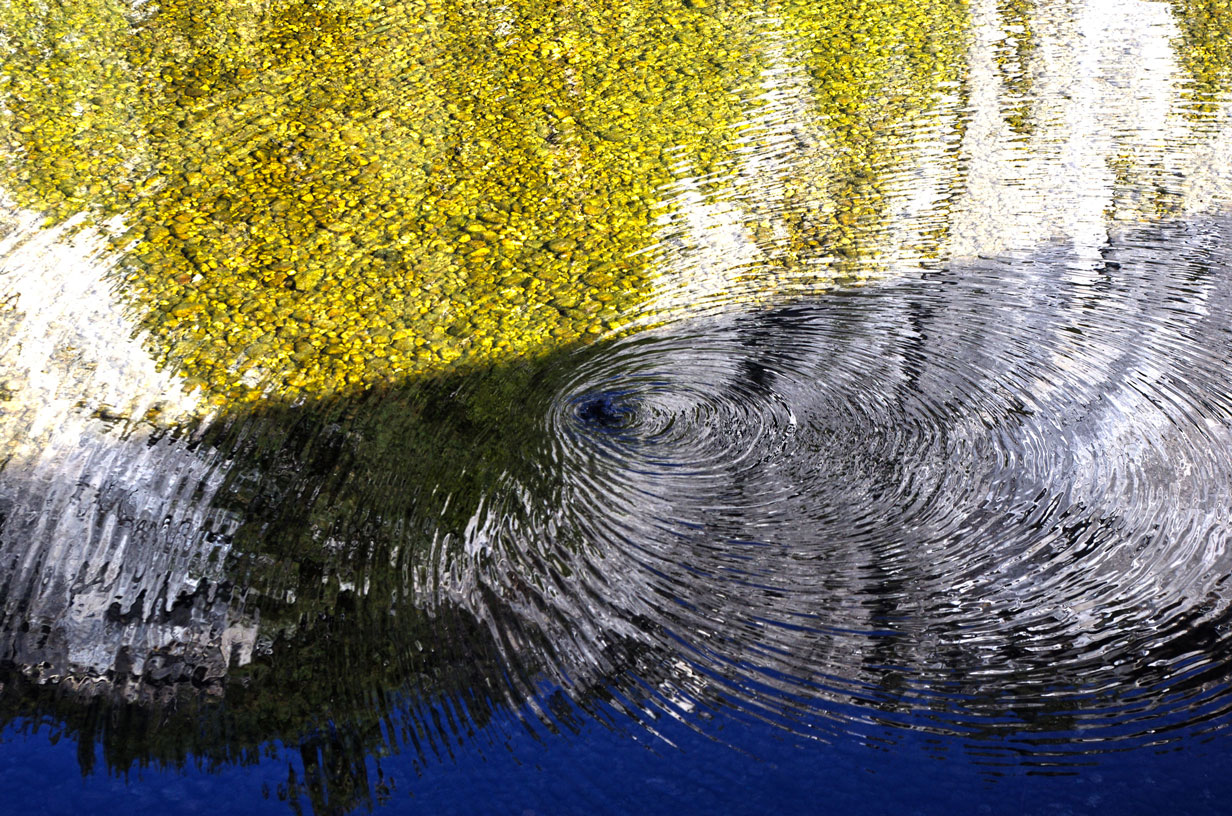I watched as two small children ran along the small sandy bank, while their parents did everything they could to prevent them from playing in the water. Sure, it has been a mild winter, but the temperature of the Merced River is still what most would consider cold and those mittens, ski jackets, and snow pants do not offer much protection from the cold water. I laughed to myself while the parents herded the kids towards the trees, away from temptation, and once again I turned my attention to the river.
Something about the water had changed. There were little rings rippling in the water, synchronized with a rhythm from a song unheard. I scanned the river and I caught sight of a smallish round bird, and I realized the kids weren’t the only ones frolicking around the water’s edge. It moved from the bank toward the center of the river; bobbing and floating the entire way. Like watching water, it was also simple and captivating. Then my eyes widened and I said out loud, “I know what that is!” I was staring at an American dipper, Cinclus mexicanus, the water ouzel--the bird Muir describes as, “a dainty, dusky little bird about the size of a robin…”
Although some might consider this bird drab colored and seemingly boring to look at, its behavior is anything but. The American dipper has created quite the ecological niche, or way of life, for itself—unique, like a fingerprint.

They are North America’s only aquatic songbird and are typically found near clear, cold, streams, and swift moving rivers (like the Merced). Their main diet consists of underwater invertebrates and even with the frigid winter water and air temperatures, the dipper will forage all year round. This little bird has thoroughly adapted to this semi-underwater lifestyle.
Think about what you might need in order to survive this lifestyle: warm outerwear, wetsuit, goggles, and (if you’re like me) a nose plug. The dipper has the equivalent of all these things. Rather than mittens, ski jackets, and snow pants, dippers have a substantial layer of down helping to insulate their bodies. Not only does the thick layer of down help to insulate, it also helps to repel water. As if that weren’t enough, the dipper has large preen glands (uropygial glands) helping to produce an oily wax that makes their plumage even more waterproof. A third eyelid, otherwise known as a nictitating membrane, acts like a goggle and allows them to see underwater. The list of other physiological elements assisting the dipper includes: special scales that slide to cover their nostrils while diving, their amazing ability to maintain internal body temperatures despite outside temperatures dropping down to as low as -22°F, along with high oxygen capacity and hemoglobin levels that allow them to store more oxygen while diving.
Unlike those two children, the dipper is well equipped to handle its frigid aquatic lifestyle. It bobs on rocks, dives into the winter waters, all the while the little dipper makes it look like fun. Muir wrote, “the little ouzel is flitting from rock to rock along the rapid swirling Canon Creek, diving for breakfast in icy pools…not web-footed, yet he dives fearlessly into foaming rapids, seeming to take the greater delight the more boisterous the stream…” He wrote often of numerous encounters with them, and it isn’t difficult to see why this was one creature John Muir claimed as a favorite. So the next time you are frolicking around Yosemite, be on the lookout for the American dipper!
